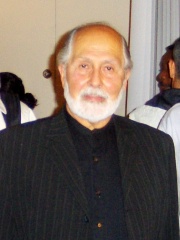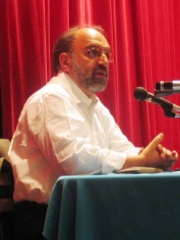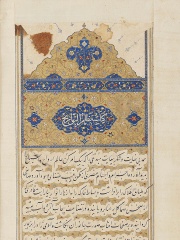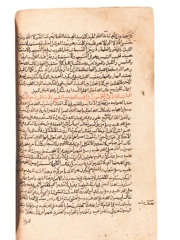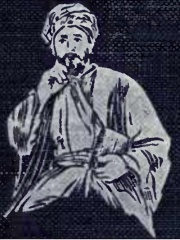


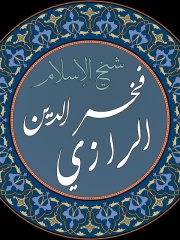

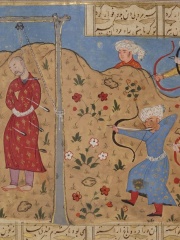
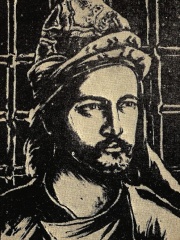
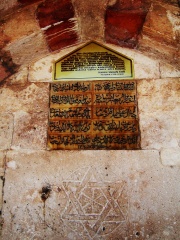
The Most Famous
PHILOSOPHERS from Iran
This page contains a list of the greatest Iranian Philosophers. The pantheon dataset contains 1,267 Philosophers, 18 of which were born in Iran. This makes Iran the birth place of the 14th most number of Philosophers behind Russia, and Egypt.
Top 10
The following people are considered by Pantheon to be the top 10 most legendary Iranian Philosophers of all time. This list of famous Iranian Philosophers is sorted by HPI (Historical Popularity Index), a metric that aggregates information on a biography's online popularity. Visit the rankings page to view the entire list of Iranian Philosophers.

1. Al-Ghazali (1058 - 1111)
With an HPI of 85.99, Al-Ghazali is the most famous Iranian Philosopher. His biography has been translated into 121 different languages on wikipedia.
Al-Ghazali, in Persian: ابو حامد محمد ابن محمد غزالی توسی, romanized: Abū Ḥāmid Muḥammad ibn Muḥammad Ghazālī Ṭūsi (c. 1058 – 19 December 1111), Latinized as Algazelus, was a Shafi'i Sunni Muslim Iranian scholar and polymath. He is known as one of the most prominent and influential jurisconsults, legal theoreticians, muftis, philosophers, theologians, logicians and mystics in Islamic history. He is considered to be the 11th century's mujaddid, a renewer of the faith, who, according to the prophetic hadith, appears once every 100 years to restore the faith of the Islamic community. Al-Ghazali's works were so highly acclaimed by his contemporaries that he was awarded the honorific title "Proof of Islam" (Ḥujjat al-Islām). Al-Ghazali was a prominent mujtahid in the Shafi'i school of law. Much of Al-Ghazali's work stemmed around his spiritual crises following his appointment as the head of the Nizamiyya University in Baghdad, which was the most prestigious academic position in the Muslim world at the time. This led to his eventual disappearance from the Muslim world for over 10 years, realising he chose the path of status and ego over God. It was during this period where many of his great works were written. He believed that the Islamic spiritual tradition had become moribund and that the spiritual sciences taught by the first generation of Muslims had been forgotten. This belief led him to write his magnum opus entitled Iḥyā’ ‘ulūm ad-dīn ("The Revival of the Religious Sciences"). Among his other works, the Tahāfut al-Falāsifa ("Incoherence of the Philosophers") is a landmark in the history of philosophy, as it advances the critique of Aristotelian science developed later in 14th-century Europe.

2. Al-Tabari (839 - 923)
With an HPI of 78.71, Al-Tabari is the 2nd most famous Iranian Philosopher. His biography has been translated into 60 different languages.
Abū Jaʿfar Muḥammad ibn Jarīr ibn Yazīd al-Ṭabarī (Arabic: أَبُو جَعْفَر مُحَمَّد بْن جَرِير بْن يَزِيد ٱلطَّبَرِيّ; 839–923 CE / 224–310 AH), commonly known as al-Ṭabarī (Arabic: ٱلطَّبَرِيّ), was a Sunni Muslim scholar, polymath, historian, exegete, jurist, and theologian from Amol, Tabaristan, present-day Iran. Among the most prominent figures of the Islamic Golden Age, al-Tabari is widely known for his historical works and expertise in Quranic exegesis, and has been described as "an impressively prolific polymath". He authored works on a diverse range of subjects, including world history, poetry, lexicography, grammar, ethics, mathematics, and medicine. Among his most famous and influential works are his Quranic commentary, Tafsir al-Tabari, and historical chronicle, Tarikh al-Tabari. Al-Tabari followed the Shafi'i school for nearly a decade before he developed his own interpretation of Islamic jurisprudence. His understanding of it was both sophisticated and remarkably fluid, and, as such, he continued to develop his ideas and thoughts on juristic matters right until the end of his life. Al-Tabari's school of jurisprudence "flourished among Sunni ulama for two centuries after his death", before it eventually became extinct. It was commonly designated as the Jariri school.

3. Bodhidharma (483 - 540)
With an HPI of 78.17, Bodhidharma is the 3rd most famous Iranian Philosopher. His biography has been translated into 60 different languages.
Bodhidharma was a semi-legendary Buddhist monk who lived during the 5th or 6th century CE. He is traditionally credited as the transmitter of Chan Buddhism to China, and is regarded as its first Chinese patriarch. He is also popularly regarded as the founder of Shaolin kung fu, an idea popularized in the 20th century, but based on the 17th century Yijin Jing and the Daoist association of daoyin gymnastics with Bodhidharma. Little contemporary biographical information on Bodhidharma exists, and subsequent accounts are layered with legend and unreliable details. According to the principal Chinese sources, Bodhidharma came from the Western Regions, which typically refers to Central Asia but can also include the Indian subcontinent. He is described as either a "Persian Central Asian" or a "South Indian [...] the third son of a great Indian king." Aside from the Chinese accounts, several popular traditions also exist regarding Bodhidharma's origins. Throughout Buddhist art, Bodhidharma is depicted as an ill-tempered, large-nosed, profusely bearded, wide-eyed non-Chinese person. The accounts also differ on the date of his arrival. One early account claims that he arrived during the Liu Song dynasty (420–479 CE). Later accounts date his arrival to the Liang dynasty (502–557 CE). Bodhidharma was primarily active in the territory of the Northern Wei (386–534 CE). Modern scholarship dates him to about the early 5th century CE. Bodhidharma's teachings and practice center on meditation and the Laṅkāvatāra Sūtra. The Anthology of the Patriarchal Hall (952) identifies Bodhidharma as the 28th Patriarch of Buddhism in an uninterrupted line that extends back to the Gautama Buddha himself.

4. Fakhr al-Din al-Razi (1149 - 1209)
With an HPI of 71.93, Fakhr al-Din al-Razi is the 4th most famous Iranian Philosopher. His biography has been translated into 35 different languages.
Fakhr al-Dīn al-Rāzī (Arabic: فخر الدين الرازي) or Fakhruddin Razi (Persian: فخر الدين رازی) (1149 or 1150 – 1209), often known by the sobriquet Sultan of the Theologians, was an influential Muslim polymath, scientist and one of the pioneers of inductive logic. He wrote various works in the fields of medicine, chemistry, physics, astronomy, cosmology, literature, theology, ontology, philosophy, history and jurisprudence. He was one of the earliest proponents and skeptics that came up with the concept of multiverse, and compared it with the astronomical teachings of Quran. A rejector of the geocentric model and the Aristotelian notions of a single universe revolving around a single world, al-Razi argued about the existence of the outer space beyond the known world. Al-Razi was born in Ray, Iran, and died in Herat, Afghanistan. He left a very rich corpus of philosophical and theological works that reveals influence from the works of Avicenna, Abu'l-Barakāt al-Baghdādī and al-Ghazali. Two of his works titled Mabāhith al-mashriqiyya fī 'ilm al-ilāhiyyāt wa-'l-tabi'iyyāt المباحث المشرقية في علم الإلهيات و الطبيعيات (Eastern Studies in Metaphysics and Physics) and al-Matālib al-'Aliya المطالب العالية (The Higher Issues) are usually regarded as his most important philosophical works.
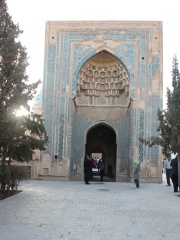
5. Bayazid Bastami (804 - 874)
With an HPI of 71.16, Bayazid Bastami is the 5th most famous Iranian Philosopher. His biography has been translated into 26 different languages.
Bāyazīd Basṭāmī, (d. 875), commonly known as the King of the Gnostics was a Persian Sufi who became famous for his bold articulation of fanāʾ–the Sufi notion of self-annhilation. Many "ecstatic utterances" (شطحات shatˤħāt) have been attributed to Bisṭāmī, which lead to him being known as the "drunken" or "ecstatic" (Arabic: سُكْر, sukr) school of Islamic mysticism. Such utterance may be argued as, Bisṭāmī died with mystical union and the deity is speaking through his tongue. Bisṭāmī also claimed to have ascended through the seven heavens in his dream. His journey, known as the Mi'raj of Bisṭāmī, is clearly patterned on the Mi'raj of the Islamic prophet Muhammad. Bisṭāmī is characterized in three different ways: a free thinking radical, a pious Sufi who is deeply concerned with following the shari'a and engaging in "devotions beyond the obligatory," and a pious individual who is presented as having a dream similar to the Mi'raj of Muhammed. The Mi'raj of Bisṭāmī seems as if Bisṭāmī is going through a self journey; as he ascends through each heaven, Bisṭāmī is gaining knowledge in how he communicates with the angels (e.g. languages and gestures) and the number of angels he encounters increases. His grandfather Surūshān was born a Zoroastrian, an indication that Bastami had Persian heritage, despite the fact that his transmitted sayings are in Arabic. Very little is known about the life of Bastami, whose importance lies in his biographical tradition, since he left no written works. The early biographical reports portray him as a wanderer but also as the leader of teaching circles. The early biographers describe him as a mystic who dismissed excessive asceticism; but who was also scrupulous about ritual purity, to the point of washing his tongue before chanting God's names. He also appreciated the work of the great jurists. A measure that shows how influential his image remains in posterity is the fact that he is named in the lineage (silsila) of one of the largest Sufi brotherhoods today, the Naqshbandi order.

6. Miskawayh (932 - 1030)
With an HPI of 70.88, Miskawayh is the 6th most famous Iranian Philosopher. His biography has been translated into 36 different languages.
Ibn Miskuyah (Persian: مُسْکُـوْيَه Muskūyah, 932–1030), (Arabic: مِسْكَوَيْه، أبو علي محمد بن أحمد بن يعقوب مسكويه الرازي) full name Abū ʿAlī Aḥmad ibn Muḥammad ibn Yaʿqūb Miskawayh al-Rāzī was a Persian chancery official of the Buyid era, and philosopher and historian from Parandak, Iran. As a Neoplatonist, his influence on Islamic philosophy is primarily in the area of ethics. He was the author of the first major Islamic work on philosophical ethics entitled the Refinement of Character (تهذيب الأخلاق Tahdhīb al-Akhlāq), focusing on practical ethics, conduct, and the refinement of character. He separated personal ethics from the public realm, and contrasted the liberating nature of reason with the deception and temptation of nature. Miskawayh was a prominent figure in the intellectual and cultural life of his time.

7. Mazdak (450 - 529)
With an HPI of 70.30, Mazdak is the 7th most famous Iranian Philosopher. His biography has been translated into 41 different languages.
Mazdak (Persian: مزدک, Middle Persian: 𐭬𐭦𐭣𐭪𐭩, also Mazdak the Younger; died c. 524 or 528) was an Iranian Zoroastrian mobad (priest) and religious reformer who gained influence during the reign of the Sasanian emperor Kavadh I. He claimed to be a prophet of Ahura Mazda and instituted social welfare programs.

8. Shahab al-Din Yahya ibn Habash Suhrawardi (1155 - 1191)
With an HPI of 68.46, Shahab al-Din Yahya ibn Habash Suhrawardi is the 8th most famous Iranian Philosopher. His biography has been translated into 34 different languages.
Shihāb ad-Dīn Yahya ibn Habash Suhrawardī (Persian: شهابالدین سهروردی, also known as Sohrevardi) (1154–1191) was a Persian philosopher and founder of the Iranian school of Illuminationism, an important school in Islamic philosophy. The "light" in his "Philosophy of Illumination" is the source of knowledge. He is referred to by the honorific title Shaikh al-ʿIshraq "Master of Illumination" and Shaikh al-Maqtul "the Murdered Master", in reference to his execution for heresy. Mulla Sadra, the Persian sage of the Safavid era described Suhrawardi as the "Reviver of the Traces of the Pahlavi (Iranian) Sages", and Suhrawardi, in his magnum opus "The Philosophy of Illumination", thought of himself as a reviver or resuscitator of the ancient tradition of Persian wisdom. Suhrawardi provided a new Platonic critique of the peripatetic school of Avicenna that was dominant at his times, and that critique involved the fields of Logic, Physics, Epistemology, Psychology, and Metaphysics.

9. Haji Bektash Veli (1209 - 1271)
With an HPI of 68.44, Haji Bektash Veli is the 9th most famous Iranian Philosopher. His biography has been translated into 28 different languages.
Haji Bektash Veli (Persian: حاجی بکتاش ولی, romanized: Ḥājī Baktāš Valī; Turkish: Hacı Bektaş Veli; Albanian: Haxhi Veli Bektashi; c. 1209–1271) was an Islamic scholar, mystic, saint and philosopher from Khorasan who lived and taught in Anatolia. His original name was Muhammad. He is also referred to as the "Sultan of Hearts" and the "Dervish of the Dervishes". He is revered among Alevis for an Islamic understanding that is esoteric, rational and humanistic. He was one of the many figures who flourished in the Sultanate of Rum and had an important influence on the culture of Turkic nomads of Asia Minor.

10. Mulla Sadra (1571 - 1636)
With an HPI of 68.03, Mulla Sadra is the 10th most famous Iranian Philosopher. His biography has been translated into 31 different languages.
Ṣadr ad-Dīn Muḥammad Shīrāzī, more commonly known as Mullā Ṣadrā (Persian: ملا صدرا; Arabic: صدر المتألهین; c. 1571/2 – c. 1635/40 CE / 980 – 1050 AH), was an Iranian Twelver Shi'i Islamic mystic, philosopher, theologian, and ‘Ālim who led the cultural renaissance in the country during the 17th century. According to Oliver Leaman, Mulla Sadra is arguably the single most important and influential philosopher in the Muslim world in the last four hundred years. Though not its founder, he is considered the master of the Illuminationist (or, Ishraghi or Ishraqi) school of Philosophy, a seminal figure who synthesized the many tracts of the Islamic Golden Age philosophies into what he called the Transcendent Theosophy or al-hikmah al-muta’āliyah. Mulla Sadra brought "a new philosophical insight in dealing with the nature of reality" and created "a major transition from essentialism to existentialism" in Islamic philosophy, although his existentialism should not be too readily compared to Western existentialism. His was a question of existentialist cosmology as it pertained to God, and thus differs considerably from the individual, moral, and/or social, questions at the heart of Russian, French, German, or American Existentialism. Mulla Sadra's philosophy ambitiously synthesized Avicennism, Shahab al-Din Suhrawardi's Illuminationist philosophy, Ibn Arabi's Sufi metaphysics, and the theology of the Sunni Ash'ari school of Kalam into the framework of Twelver Shi'ism. His main work is The Transcendent Philosophy of the Four Journeys of the Intellect, or simply Four Journeys, In which he attempted to reach Sufism and prove the idea of Unity of Existence by offering a new intake and perspective on Peripatetic philosophy that was offered by al-Farabi and Avicenna in the Islamic world.
People
Pantheon has 18 people classified as Iranian philosophers born between 450 and 1974. Of these 18, 3 (16.67%) of them are still alive today. The most famous living Iranian philosophers include Hossein Nasr, Abdolkarim Soroush, and Taraneh Javanbakht. The most famous deceased Iranian philosophers include Al-Ghazali, Al-Tabari, and Bodhidharma.
Living Iranian Philosophers
Go to all RankingsHossein Nasr
1933 - Present
HPI: 61.19
Abdolkarim Soroush
1945 - Present
HPI: 58.23
Taraneh Javanbakht
1974 - Present
HPI: 46.28
Deceased Iranian Philosophers
Go to all RankingsAl-Ghazali
1058 - 1111
HPI: 85.99
Al-Tabari
839 - 923
HPI: 78.71
Bodhidharma
483 - 540
HPI: 78.17
Fakhr al-Din al-Razi
1149 - 1209
HPI: 71.93
Bayazid Bastami
804 - 874
HPI: 71.16
Miskawayh
932 - 1030
HPI: 70.88
Mazdak
450 - 529
HPI: 70.30
Shahab al-Din Yahya ibn Habash Suhrawardi
1155 - 1191
HPI: 68.46
Haji Bektash Veli
1209 - 1271
HPI: 68.44
Mulla Sadra
1571 - 1636
HPI: 68.03
Al-Baydawi
1201 - Present
HPI: 64.85
Shihab al-Din 'Umar al-Suhrawardi
1145 - 1234
HPI: 64.44

